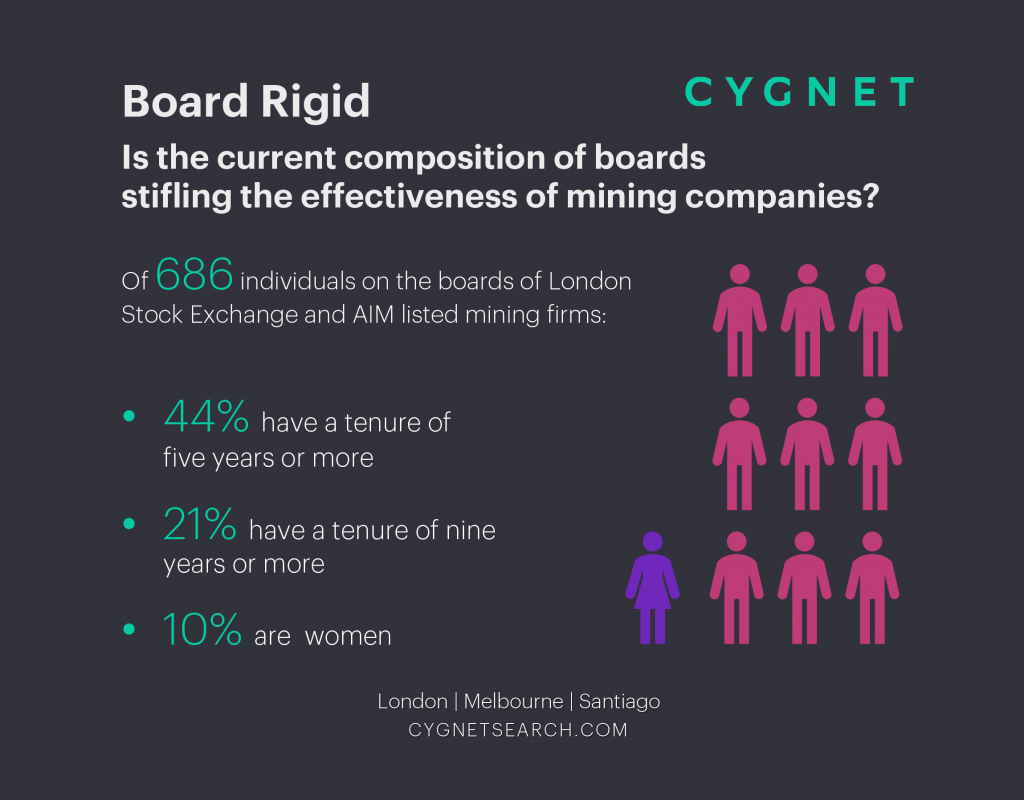Introduction
In June 2021, Swann Group founder, John Murray, presented at the Critical Minerals Association‘s G7 event in Cornwall to discuss the importance of mining to society.
John highlighted six issues facing mining beyond the immediate challenge of the pandemic.
In this series of articles, John expands on his G7 presentation and explores those challenges in more detail. Often, he makes suggestions for how we might address them, based on interviews with some of the mining greats and his own experience in the industry. Sometimes he simply poses questions to provoke thought and discussion for inclusion in a future update.
We’ve gathered these articles in a single publication readers can download from the Swann Group website research page: https://the-swann-group.com/research/
In this penultimate article John explores mining’s need to tap into more diverse thinking.
Part 5: A lack of diversity in mining
It has been many years since increased diversity at all levels of an organisation has been perceived as a reluctant compromise to pacify legislators and the politically correct. The case for increasing the number of women in board positions, for example, is well-established and uncontroversial.
Nevertheless, our own research, Board Rigid, found that only ten per cent of 686 individuals listed on the boards of LSE and AIM-listed mining companies are women. It’s a pitiful number which, despite the efforts of Anglo America, Glencore and others is likely to take decades to change at current rates. This is a global phenomenon; we have recently reported initiatives in Chile and South Africa which attempt to address the gender gap.
Age and Racial Diversity
Similarly, racial diversity in our industry is generally poor, and education figures suggest that at the more senior levels this will not change anytime soon. In 2016, for example, only six per cent of US citizens or permanent residents awarded geoscience doctorates came from underrepresented minorities. This represents the lowest proportion of any STEM field.
Age diversity too is an issue. Mining’s struggle to attract new talent since the last boom is well documented. These difficulties have resulted in an ageing workforce and a lack of new ideas and approaches coming into the industry. At Swann, we’ve long argued the need for a strategy to position mining as an attractive option for graduates. We advocate a PR and marketing campaign, co-funded by the large mining employers, governments and membership bodies.
Neurodiversity
We can look beyond the standard diversity lens and explore employing people with conditions such as ADHD, dyslexia, and autism.
The benefits of neurodiversity recently received a great deal of coverage after the British secret service publicised its search for people who could provide completely new ways of looking at data and challenges.
BHP made a commercial case for a more neurodivergent workforce recognising the value fresh ways of thinking can bring.
The lack of new ideas in mining is reinforced by the seeming reluctance on the part of miners to employ individuals from different sectors or backgrounds. Hiring from the IT sector, for instance, will help close a skills gap that could become an existential challenge as miners increasingly need to embrace automation, AI and connectivity.
Even when miners employ leaders from their own sector, the range of backgrounds from which they are appointed is narrow. Once again, the Board Rigid research report makes for unsettling reading here. Analysis of the membership of London listed mining firms found that only five per cent have backgrounds in health, safety, community, and ESG. Of these, half are women.
The benefits of diverse workforces are well-rehearsed – if not always widely accepted. More innovation, new solutions to old problems, closing skills gaps and improved financial performance.
To affect change, we need more visible role models and outreach work from industry bodies. And we need recruitment processes that encourage applications beyond the usual suspects.
John Murray, Founder and Advisor, The Swann Group
In the final part of this series, John looks at the talent shortfall in mining and brings the series to a conclusion.



